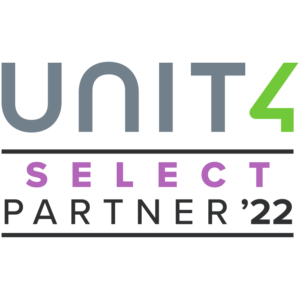Welcome to the ITK Spotlight. Where a senior ITK Solutions Group team member will introduce a topic that Retail professionals are interested in to help them with their future or ongoing Retail ERP / CRM project(s).
For those of you who are not familiar with ITK Solutions Group, we are retail experts who just happen to be systems integrators. The way we look at it, software is just a tool to solve retail business problems. Our approach is process first, technology second.
Today we’re talking with Susan Alvarez. Susan is our VP of Consulting Services. She has a unique perspective solving business problems from both sides of the table. How about we start there…
Susan, can you tell us your experiences as a retailer and as a consultant for retail software in Microsoft Dynamics AX?
Sure, I started on the client side of the table as a controller for a public company for 5 years, a CFO for 7 years, consulting for 10 years, 5+ years in the AX space and I worked for one of our esteemed competitors for 5 years. So I had some background before coming to AX 5 years ago. I think I get a little bit of both the client side and the consulting side as far as what the issues are. To be more specific, what retailers need, and what consultants need to offer so that we can find a happy medium.
Generally speaking, retail consumers that purchase products / services, across multiple sales channels, tend to be more profitable for retailers than consumers that purchase products /services from a single sales channel. And a large majority of these retailers can’t, or don’t know how to capture this information to better serve their most profitable customers. So what’s the best way to identify who these customers are? And more importantly, how they can turn this data into actionable information?
That’s a really good question, and it definitely relates strongly to the concept of Retail Amnesia™. I think sometimes there’s a problem with identifying specific customers. Especially customers that come from brick & mortar stores, because they typically don’t tell you who they are, and you can’t really determine who they are through their credit card information (for legality purposes). However, if there’s a loyalty program in place, then that can help retailers to better identify these customers and also their personal buying habits. E-commerce customers on the other hand, make this process a little bit easier because they are providing retailers with contact and shipping information.
So, to answer your question, for retailers that want to find out who their most profitable customers are, what they’re buying, and how they can better serve these customer segments, they should have some sort of loyalty program in place to capture brick and mortar sales data, and have that data aggregated with the rest of their sales data (from all sales channels). This allows retailers to gain a single view of their customers, which will not only help them identify who these customers actually are, but it also gives them the insight they need to create a more personalized shopping experience for each customer segment.
To get a bit more granular, how does what you just talked about help to better serve these types of customers and the retailers, as well?
Well, if retailers know what their customers buying habits are (which products they typically buy and how often they buy) it can give them the opportunity to more effectively market complimentary products, or even upsell / cross-sell products that might be beneficial for the consumer.
For example, if you’re a retailer that sells skin care products and you notice that a particular consumer buys a specific body lotion, then maybe you can point that consumer to a sun screen product or daily face wash that compliments the body lotion that the consumer purchases from you on a regular basis. Or, if you notice that this particular customer is purchasing a body lotion on a weekly basis, you could upsell them to another body lotion that they won’t have to use as often or as much of, which will increase the amount they spend each time, but also decrease how often they need to purchase the product (which would increase their satisfaction and relationship with your company).
All of which segues into what the customer gets out this: they get a more personalized shopping experience because the retailer understands what they buy and how often they buy it, which allows them to see offers that are relevant to their personal tastes and preferences. But, keep in mind, this can only be achieved if you know who your customers are, what their buying habits are, and which sales channels they prefer to use. The point is, to better understand your customer so that you can better serve them.
Speaking of sales channels, I’d like to circle back to the topic of brick & mortar sales, and how retailers can more effectively capture customer purchase data on this particular channel. What would you suggest as the most effective strategy for finding out who these customers are and what their purchase habits look like?
Well, that goes back to having an effective loyalty program in place. Something that will incentivize the customer(s) to give you more information about themselves, so that you can effectively track each purchase and start to better understand their buying habits / patterns. Obviously, not every customer is going to be willing to do this, so there needs to be more of a multi-pronged approach. Another option could be to incentivize consumers to “check-in” at your store via social media in exchange for discounts or other promotional offers for doing so. Finally, with beacon technology becoming more and more feasible, it can provide another option to better enhance the customer’s in-store experience, and also gives retailers another opportunity to capture in-store consumer data.
The reality is this: it’s completely dependent on what the retailers are willing to give up, in terms of promotional offers to their customers, in return for the consumer’s brick & mortar sales data. And more importantly, if these promotional offers align with the desired customer’s wants and needs, which may require the retailer to conduct some sort of primary research to figure out, in general, what those wants and needs are. As a caveat to that, retailers have to understand that there is particular demographic of consumers that just don’t want to give out their personal information, regardless of what you offer them.
Do you have any suggestions as far as how retailers can more effectively measure how much money they’re making from each channel, so they can better identify which channels are the most profitable?
Well the obvious place to start (for me) would be product profitability. GMROI or Gross Margin Return on Investment. How much do you pay for your products? And what’s the gross margin on those products? But it’s not always that simple. You’ll need to dig a bit deeper and understand what the true cost of those products are and if it costs you more to sell them through specific channels.
A lot of retailers don’t have the proper data to take into consideration their distribution center and transportation costs (freight and customs) down to the item level and to properly understand channel profitability. Consider the following discussion points.
- If you’re not having items directly shipped to your stores, but instead, shipped to your distribution center, that will have one cost for distribution.
- If you have to then ship items to the store, that adds another layer of cost.
- Also, how much time / money is your distribution center spending to ship these items to your stores vs internally servicing E-commerce? This gets at labor and occupancy costs, which are hard to quantify down to the item level and will be different per channel.
- So, even if you decide that Ecommerce is not profitable enough:
- Can you actually have a smaller distribution center if you didn’t have Ecommerce at all (can you really cut costs associated with that)?
- Would you lose store sales as a result? How many store sales are influenced by Ecommerce? Do you know?
The point of these questions is that retailers really need to understand specifically what the true cost(s) are, in terms of individual products, and what the true cost(s) are, in terms of selling them in different channels. It can be difficult to quantify everything, but the more granular you can get with your analysis of Cost of Goods Sold (by product and by channel), the more effective (and, I would argue, profitable) you’ll be as an Omni-channel retailer.
What are the key questions / suggestions that you ask / give your clients to help them identify the true cost(s) of individual products and also which sales channels make the most sense for them to use for those products?
Well, as I mentioned earlier, I like to start with item profitability (How much you spent on the product vs. how much you sell it for). And then move onto the add-ons that are directly attributable to the purchase. What did you pay the vendor or an outside carrier for freight and customs? How much is the labor? What are the fixed expenses? What’s the cost of packaging orders from Ecommerce sales? This will typically help them start thinking through all the costs associated with their products from beginning to end, and should help them make better choices about which products should be sold through which channels, and which products they should consider bundling together.
It’s important to look at each product, in terms of its profitability, and also the companion products. To give you an example, let’s say you’re a retailer that sells office products; in this example the product is paper for copy / fax machines. And you realize that you’re not making much money from selling copy paper, via your Ecommerce channel, because the shipping costs are too high due to the weight and gross margin. But, you also realize that the customers that are buying paper from you, via Ecommerce, are also purchasing toner, which is not as expensive for your company to ship, and you get good margin on your toner sales. So maybe that means that you should continue to sell copy paper, via Ecommerce, even though it’s not necessarily profitable to do so, simply because you can recover that cost (and then some) from the combination sales of your toner and paper.
Keep in mind that as a retailer, you may not make very much money directly from your Ecommerce channel(s), but your Ecommerce channels could be driving a large portion of sales to your brick & mortar stores (and vice versa).
If you’re wondering how ITK can help you do this with Microsoft Dynamics AX + CRM Online – Contact [email protected] to set-up an appointment with one of our seasoned retail solutions experts.





